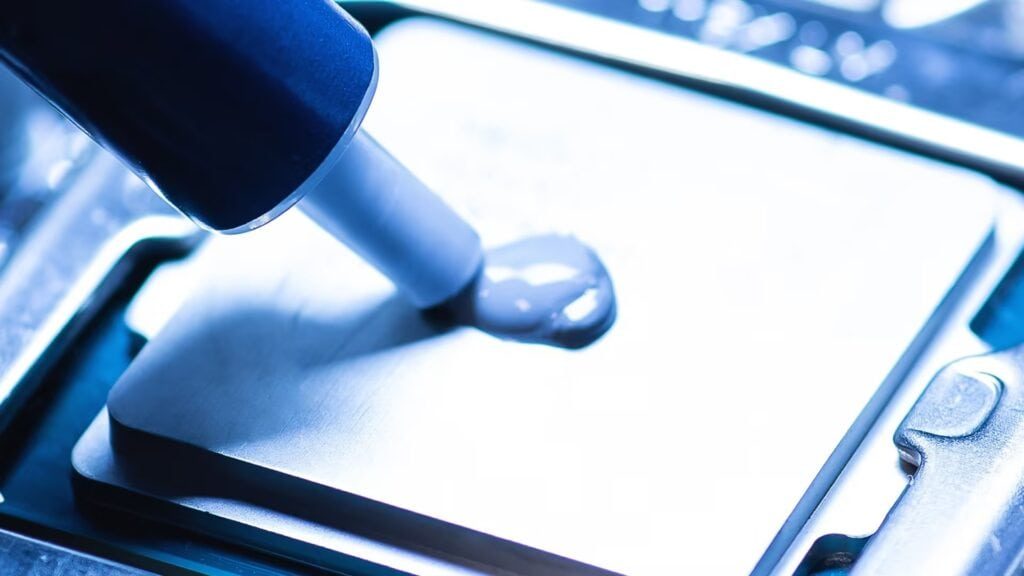What is Plumbers Tape? The Basic Concept
So the basic point is, plumbers tape is not like regular adhesive tape. It does not have a sticky side. Instead, it is made from a plastic film called polytetrafluoroethylene (PTFE). You will see this material mentioned often. PTFE has a very low coefficient of friction. This means it allows the threads of pipes to slide together more easily. Simultaneously, it creates a tight seal when the joint is tightened.
Why Use Plumbers Tape?
The main reason thread sealant tape is used is to prevent leaks. When you connect two threaded pipes, small gaps can exist between the threads. Water or gas can seep through these gaps. Plumber’s tape fills these gaps. It acts as a physical barrier and helps to lubricate the threads, allowing you to tighten the joint more effectively. This point is noticeable.
Different Types of Plumbers Tape
Thread sealant tape comes in different colors. The color often indicates its thickness or intended use.
White Plumbers Tape
This is the most common type. You can use it for most general plumbing applications. This includes water lines for sinks and toilets.
Pink Plumbers Tape
Pink tape is usually thicker than white tape. It is often used for showerheads and faucets. Its extra thickness can provide a better seal in these applications.
Yellow Plumbers Tape
Yellow plumbing tape is specifically designed for gas lines. It is thicker and denser than white tape. It is also more resistant to the chemicals found in propane and natural gas. You should only use yellow tape for gas line connections. This point is important for safety.
Green Plumbers Tape
Green plumbers tape is a special type used for oxygen systems. It is oil-free to prevent contamination.
How to Use Plumbers Tape: A Step-by-Step Guide
The next thing is how you actually use thread sealant tape. Follow these simple steps:
Step 1: Clean the Threads
First, ensure the pipe fitting threads are clean and dry. Remove any dirt or old tape.
Step 2: Wrap the Tape
Take the end of the plumber’s tape and start wrapping it around the male threads of the pipe. You should wrap in the opposite direction from where you will be tightening the fitting. For most standard threads, this means wrapping clockwise.
Step 3: Overlap Slightly
As you wrap, overlap the previous layer of tape slightly. This helps to ensure a good seal.
Step 4: Apply Enough Tape
You will want to apply enough tape to create a good seal. Two to three wraps are usually sufficient for most applications. You might need more for larger pipes or higher-pressure systems.
Step 5: Tighten the Fitting
Once you have applied the tape, you can tighten the fitting as usual. The tape will help to create a tight, leak-proof seal.
Where to Use Plumbers Tape: Standard Applications
Plumbers tape is a versatile tool that you can apply in many different plumbing scenarios around your home and even in some industrial settings. Let’s explore some common applications in more detail.
Faucet Connections
You will frequently use plumbers tape when installing or repairing faucets. This includes the connections between the faucet body and the water supply lines (both hot and cold). You will also use it on the threaded connection where the faucet spout attaches to the base. Applying thread sealant tape to these threads ensures a watertight seal and prevents drips.
Showerhead Connections
Another common place to use plumbing tape is on the threaded connection between the shower arm (the pipe coming out of the wall) and the showerhead. This connection is prone to leaks due to frequent temperature changes and water pressure. Wrapping the threads of the shower arm with pipe thread tape before attaching the showerhead will help prevent those annoying drips from above.
Toilet Connections
When installing or replacing a toilet, you will encounter several threaded connections where plumbers tape is essential. This includes the connection between the water supply line and the fill valve on the toilet tank and the connection between the supply line and the shut-off valve on the wall. Using pipe thread tape on these threads ensures a leak-free connection.
Pipe Fittings
Plumbers tape is widely used on various threaded pipe fittings throughout your plumbing system. This includes connections between pipes and elbows, tees, couplings, and other fittings. Whether you are working with copper, PVC, CPVC, or galvanized steel pipes, plumbers tape can help create a tight seal at these threaded joints.
Garden Hose Connections
Even outdoors, plumbers tape can be a handy tool. Use it on the threaded connection between your garden hose and the spigot (outdoor faucet). This will help prevent leaks and ensure that water flows efficiently through your hose.
Appliance Connections
Many household appliances that use water, such as washing machines and dishwashers, have threaded connections for their water supply hoses. Applying plumbing tape to these threads before connecting the hoses will help prevent leaks around these appliances.
Sprinkler Systems
If you have an underground sprinkler system, you will likely encounter numerous threaded connections in the pipes and sprinkler heads. Plumbers tape is crucial for sealing these connections and preventing water loss in your lawn irrigation system.
Gas Line Connections
Remember that yellow pipe thread tape is specifically designed for use on threaded gas line connections. This includes connections for natural gas and propane appliances like stoves, water heaters, and dryers. Using the correct yellow tape is essential for safety when working with gas lines.
Sensor and Gauge Connections
In some plumbing and industrial applications, sensors or gauges might need to be connected to threaded ports. Using plumber’s tape on these connections ensures a tight seal and helps maintain accurate readings.
Temporary Repairs
In some situations, pipe thread tape can temporarily fix minor leaks in threaded connections until a more permanent repair can be made. However, addressing the underlying issue as soon as possible is important.
Common Mistakes to Avoid Using Plumbing Tape
You will see that even though using plumbers tape is simple, there are some common mistakes people make.
Wrapping in the Wrong Direction
If you wrap the tape in the same direction you tighten the fitting, the tape can bunch up. This can prevent a good seal. Always wrap in the opposite direction of tightening.
Using Too Much or Too Little Tape
Using too little tape might not create a proper seal. Using too much tape can make it difficult to tighten the fitting properly. Stick to two to three wraps for most applications.
Not Overlapping the Tape
If you don’t overlap the tape slightly, there can be gaps. These gaps can lead to leaks.
Over-tightening the Fitting
While plumbing tape helps create a seal, over-tightening can damage the fitting. Tighten until snug, but avoid excessive force.
Alternatives Sealing Methods to Plumbers Tape
While plumbers tape is a common solution, there are other ways to seal threaded pipe joints.
Pipe Dope
Pipe dope is a paste-like compound that you apply to the threads. It also helps to create a seal. Some plumbers prefer pipe dope for certain applications. It can be messier to apply than leak-proof tape.
Liquid Thread Sealants
Liquid thread sealants are also available. These are applied to the threads and then hardened to create a seal. They can offer a more permanent seal than plumbing tape.
Troubleshooting Leaks
Sometimes, a joint might still drip or leak even after carefully applying leak-proof tape. Question, what could be the underlying cause? It is important to analyze the situation to solve the problem systematically.
Not Enough Tape
One common reason for a persistent leak is simply not using enough tape. You might have only applied one layer, which might not be sufficient to fill all the tiny gaps in the threads. Consider adding another one or two wraps of plumber’s tape. Make sure each wrap overlaps the previous one slightly. This can often solve the issue. You will see that a little extra tape can make a big difference.
Incorrect Application
As discussed earlier, the direction you wrap the tape is crucial. If you wrapped the tape in the same direction you tightened the fitting, the tightening action can actually push the tape off the threads. This will definitely lead to a leak. So, you see, always double-check that you are wrapping the tape clockwise on a standard male thread. If you made this mistake, remove the old tape and apply fresh tape in the correct direction. This point is important to verify.
Damaged Threads
Sometimes, the problem is not with the tape but the threads on the pipe or fitting. Scrutinize the threads. Are they stripped, cross-threaded, or damaged in any way? If you observe any damage, plumbers tape might not be able to create a proper seal. In this case, the only real solution is to replace the damaged pipe or fitting. This point is noticeable and requires attention.
Over-tightening
It might seem logical that tightening a joint as much as possible will prevent leaks. However, overtightening can actually distort the threads or damage the fitting, creating new pathways for leaks. Try slightly loosening the fitting and then re-tightening it until it is snug. You will see that sometimes, backing off a little can stop the leak.
Type of Tape
Are you using the correct type of plumbers tape for the application? For example, using standard white tape on a gas line is dangerous. Always use yellow tape for gas connections. Similarly, use the appropriate green tape for specialized applications like oxygen systems. Using the wrong type of tape might not provide the necessary seal or chemical resistance. This point is important for safety and effectiveness.
Material Compatibility
While leak-proof tape works on many types of pipes, consider the material. Excessive tightening, even with tape, could lead to cracking for certain types of plastic pipes or fittings. Be mindful of the material you are working with and avoid applying excessive force.
Existing Sealant
If old plumber’s tape or another type of sealant was on the threads, make sure you clean it off completely before applying new tape. Old, damaged sealants can prevent the new tape from properly forming a seal.
Pressure Issues
In some cases, the leak might not be due to the fitting itself but due to excessive pressure in the system. Leak-proof tape is designed to handle normal household water and gas pressures. If the pressure is unusually high, it might overwhelm the seal created by the tape. In such situations, you might need to address the underlying pressure issue in your plumbing system.
Evaluate the Entire Connection
Sometimes, the leak might not be exactly at the threaded joint where you applied the tape. Carefully observe the entire connection. Is the leak coming from a crack in the pipe near the fitting? Is a gasket or washer missing in another part of the connection? Make sure you are addressing the actual source of the leak.
Safety Precautions Using Plumbers Tape
Plumbers tape is generally safe to use. However, consider these points:
Use the right type:
Always use the correct color of plumbers tape for the application, especially for gas lines.
Don’t use on compression fittings:
Plumbers tape is for threaded connections only. Do not use it on compression fittings.
Keep away from children:
While not toxic, plumbing tape can be a choking hazard for young children.
Conclusion
To summarize, plumbers tape is a simple and effective tool for preventing leaks in threaded pipe joints. You have seen it is easy to use and has many applications around the home. By understanding the different types of tape and how to apply it correctly, you can solve many common plumbing issues yourself. So, the basic point is, keep a roll of leak-proof tape handy. It can save you from costly water damage and the hassle of calling a plumber for minor leaks. This point is noticeable and important.
Jiuju Tech provides high-performance adhesives and thermal materials. Ideal for industrial, automotive, and electronics applications. Strong bonding, durability, and excellent heat resistance for reliable, long-lasting results.





